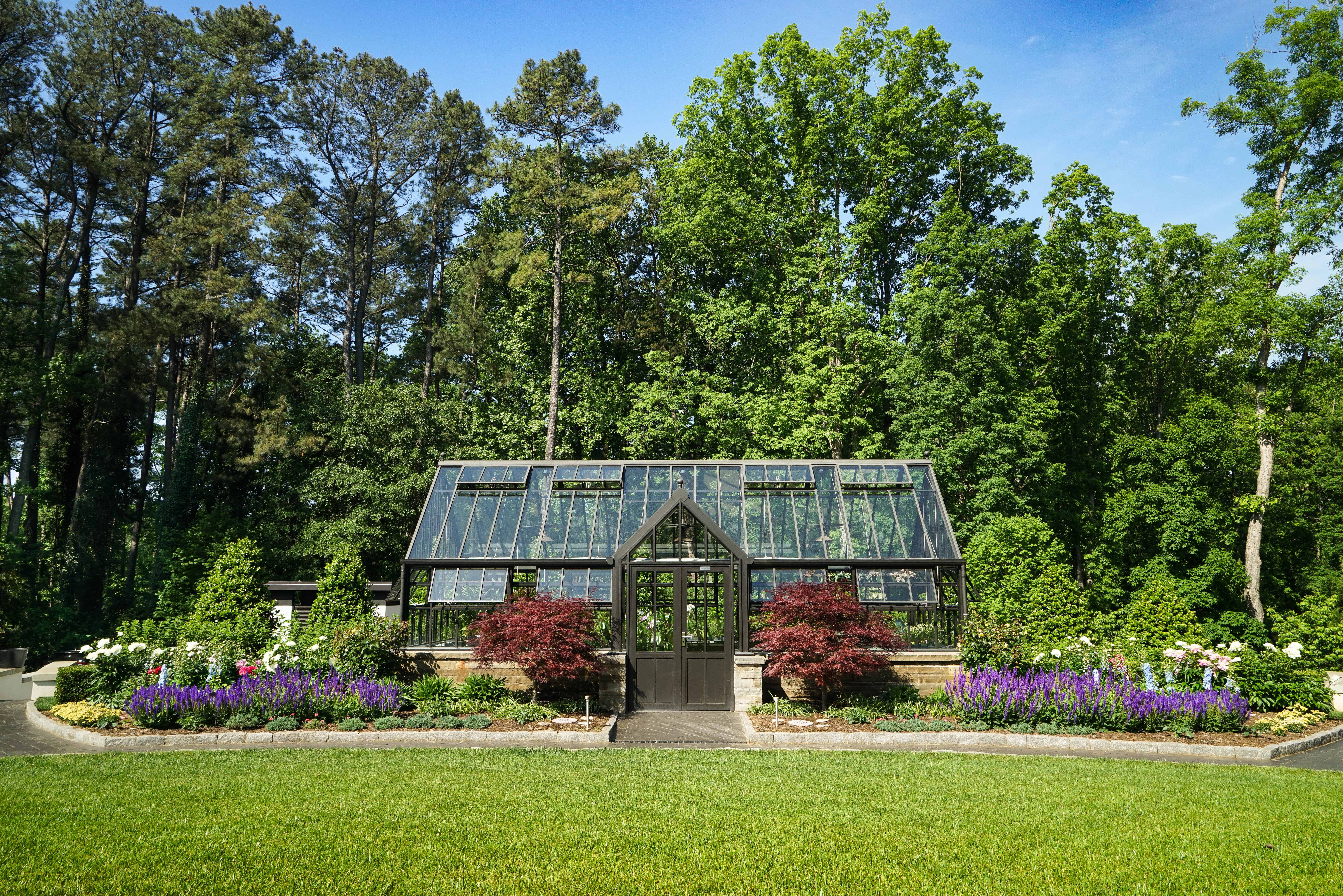
Every May, Britain's most celebrated gardening event, the Chelsea Flower Show, returns to London to bring vibrant color, serene greenery, and show-stopping designs to the heart of the city. Established by the Royal Horticultural Society (RHS) in 1912, the five-day exhibit sees the grounds of the Chelsea Hospital transformed into a beautiful display of landscape gardens and, as you can imagine, it's a field day for discovering fresh and exciting ways to style your outdoor space.
Just like our homes, our backyards should be true extensions of our personalities. These outdoor sanctuaries should be bursting with character, with eye-catching features that tell a story at every turn and offer a moment's respite from the chaos of the world that lies beyond. Each distinct space at the RHS Chelsea Flower Show offers just that, combining contemporary gardening techniques with classic heritage-inspired designs that make you want to sit back, relax, and enjoy a quiet moment in nature.
Plenty of inspiring new garden trends emerged from this year's Show that are sure to define our next season's planting. If you want to bring the essence of an English country garden into your backyard, here are five landscaping ideas that captured our hearts at Chelsea this year.
1. Victorian Glasshouses
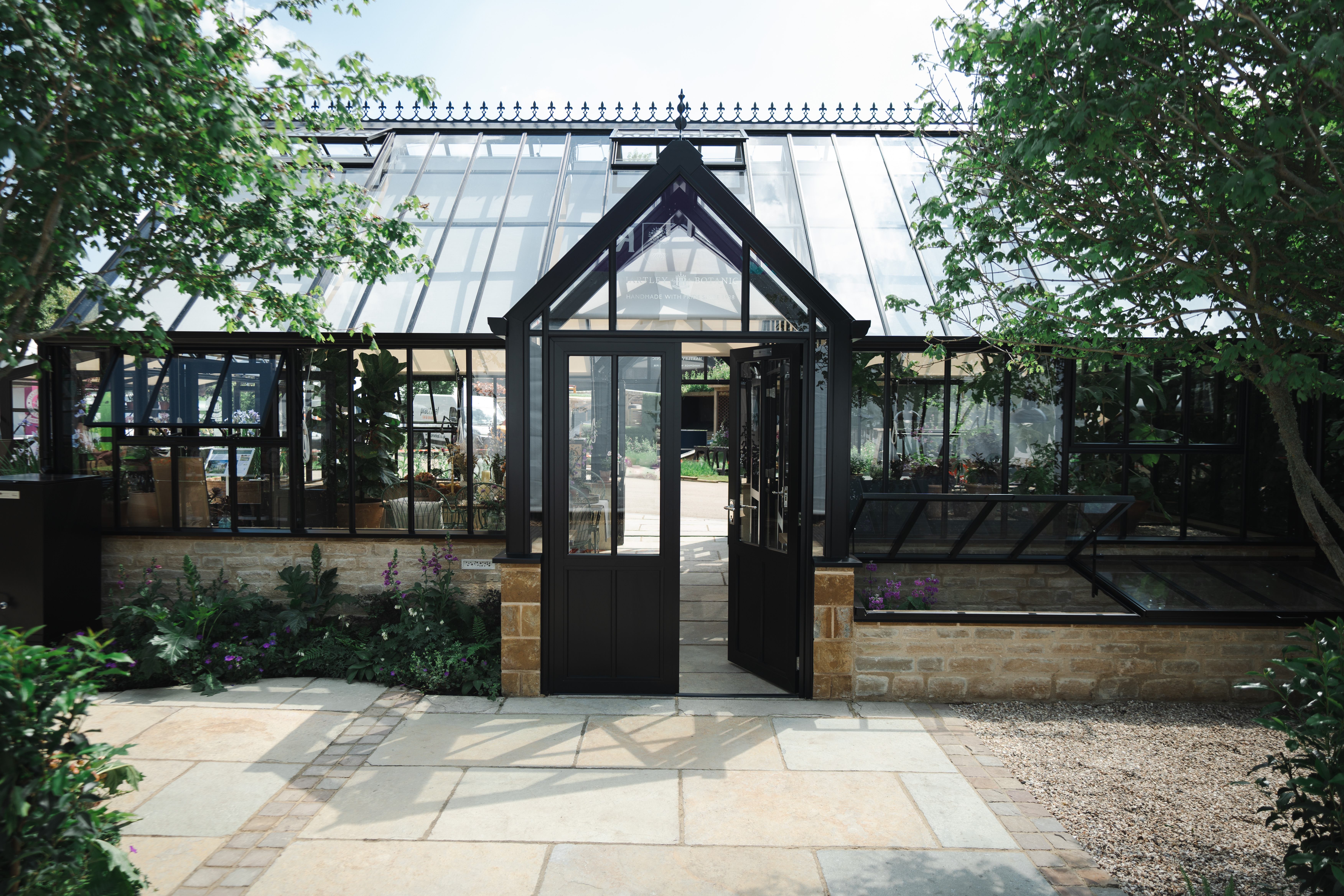
Victorian-style glasshouses are the sophisticated older relative of the greenhouse. These traditional garden structures - often built on brick foundations - are made of glass panes that trap heat to encourage plant growth, and stylish dark-framed iterations were a common sight at Chelsea.
Exhibitors Hartley Botanic showcased a glorious selection of their English glasshouses at this year's Show, and they made for a dramatic landscaping idea. 'For more than 70 years we have been exhibiting at Chelsea, and our Victorian Manor is the largest Glasshouse we have ever shown,' says CEO Tom Barry, who notes their nostalgic and romantic Victorian range as the most popular. 'This reflects a trend for larger and grander Victorian-style structures amongst many customers for increased growing ambitions, greater lifestyle requirements, and more diverse growing. It also means they can work as a multi-purpose growing/lifestyle space.'
Tony O'Neill, professional gardener and owner of Simplify Gardening, owes the resurgence of English-style glasshouses to the way they blend historical charm with practical gardening needs. 'These structures are not only architectural beauties but also provide a controlled environment for growing a variety of plants year-round,' he says. 'For gardeners looking to incorporate a Victorian glasshouse, I recommend focusing on both aesthetic details and functional design to ensure it meets contemporary needs without losing its classic appeal.'
2. Edible Gardens

This year at Chelsea proved that with careful thought and curation, modern vegetable gardens can look just as beautiful as our flower beds. Gardeners Chris Hull and Sid Hill of Greenbook Landscape Design created the 'Microbiome Garden' for a bowel research charity. The space features an edile meadow incorporating the likes of Lupins and Camassia to inspire people to rewild both their diets and gardens.
'People are now realizing the importance of the landscape or garden as both a beautiful space but also a tool to support our whole bodily health,' says Chris. 'Some people may think that an edible meadow or food forest is quite radical, but actually it's probably the most traditional idea around. This is because people have tended to the landscape as a food source for thousands of years, and we as people have forgotten that along the way. We want to inspire people to nurture a healthy landscape, and in turn it will give us a healthy gut and a healthy mind.'

Similarly, gardening duo Will Dutch and Tin-Tin Azure-Marxen of DUTCH Landscape Architects were awarded Silver-Guilt for their 'Pulp Friction' garden, supporting those with learning difficulties entering work, featuring an edible hedge of beans.
'I think edibles and edimentals (ornamental edibles) are trending because people are more aware of where their food comes from and the joy of growing your own,' says Will. 'Sometimes you don't want a veg garden, so we have created a 100% edible ornamental scheme which has really surprised the public. For example, did you know you can deep fry a Geum leaf and it pops up like a prawn cracker, and if you can beat the bees to the Aquilegia flower it is a delicious sweet treat?'
When planning an edible garden, Tony urges us to consider crop rotation and companion planting to maximize yield and maintain soil health. 'This trend is all about making the most of your garden space for both beauty and bounty,' he says.
3. Underplanting
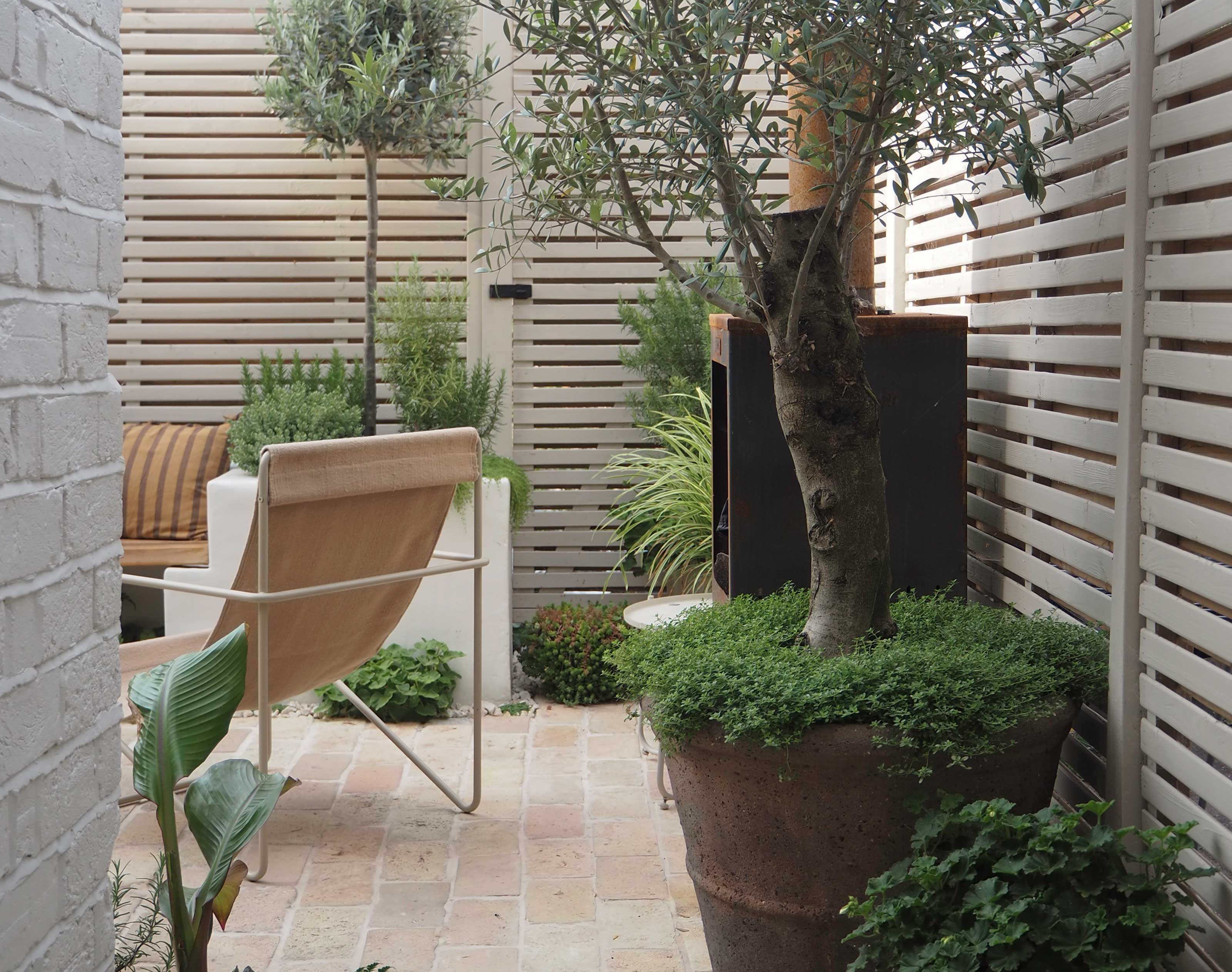
Underplanting - the process of adding smaller flowers, shrubs, or groundcovers to a container beneath larger plants or trees - was a common theme at Chelsea Flower Show this week. The technique was used subtly within many of the purpose-built gardens for a more vibrant, fuller-looking display of blooms.
'Underplanting is a fantastic way to maximize garden aesthetics and efficiency,' explains Tony. 'This technique involves planting smaller plants beneath a larger canopy, creating a multilayered floral display. It's particularly effective for adding interest and color while improving soil moisture retention.'
While nothing new to experienced green thumbs, this planting technique is popular among landscapers for adding depth, dimension, and detail to even the smallest of gardening ideas. 'For those exploring underplanting, I recommend choosing plants with varying textures and colors that complement each other and thrive in similar light and soil conditions,' Tony adds.
4. Structural Plants
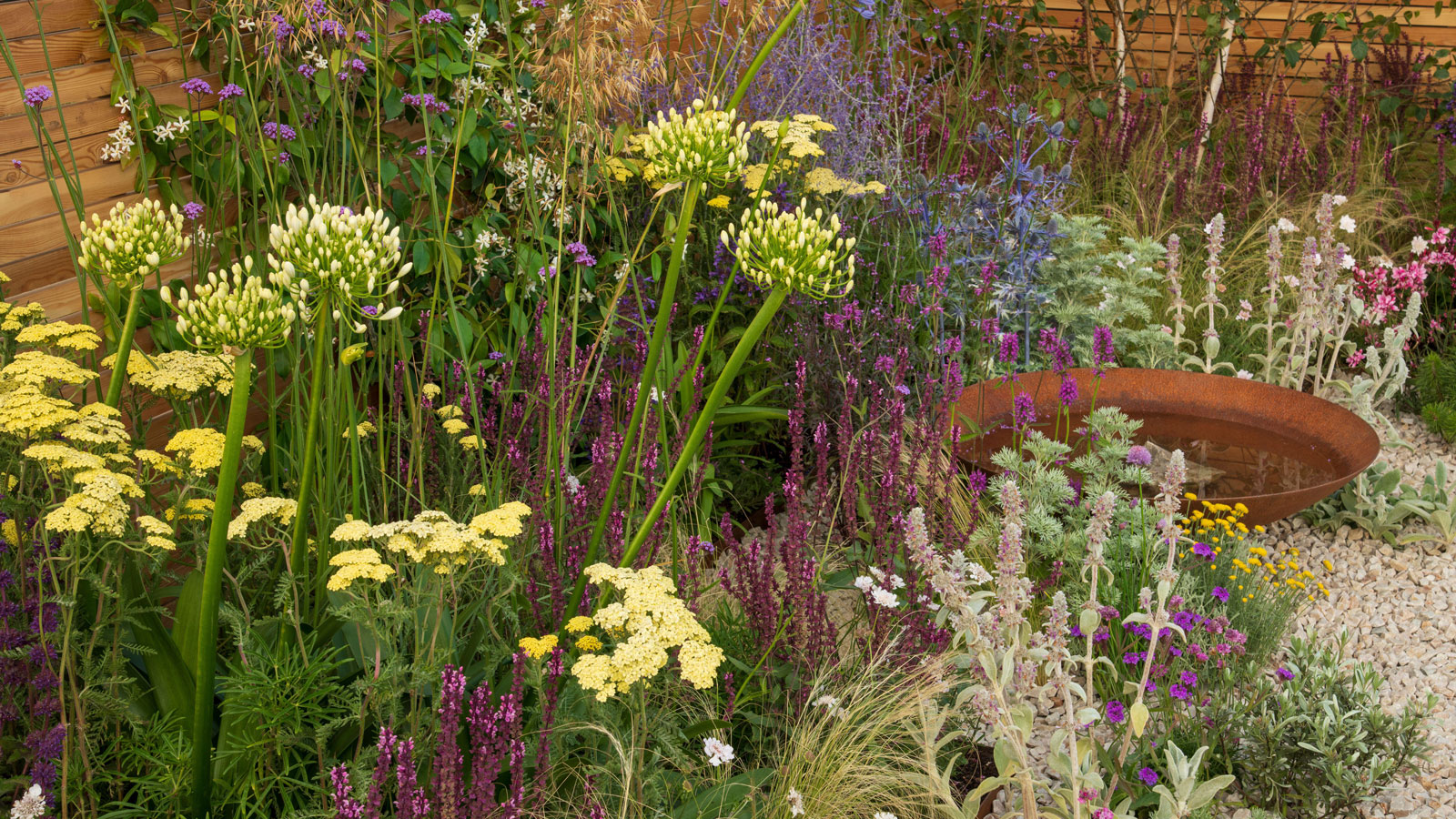
A common sight within underplated containers was tall, structural plants that made a real statement, often accompanied by ornamental grasses or shrubs for a layered look. The likes of agapanthus, irises, alliums, and verbena could also be seen nestled in deep borders where they tower over smaller flowers and shrubs, their blue and purple blooms offering bursts of color among a sea of green and demonstrating a great way to add height to a backyard.
'Structural spiky plants like agaves or tall grasses add a bold element to garden designs,' Tony recommends. 'They serve as focal points and can break the monotony of soft plantings. When integrating spiky plants into your garden, consider their placement for maximum visual impact and ensure they have enough space to grow without overcrowding. These plants often require minimal care, making them ideal for low-maintenance gardens.'
5. Climate resilient gardens
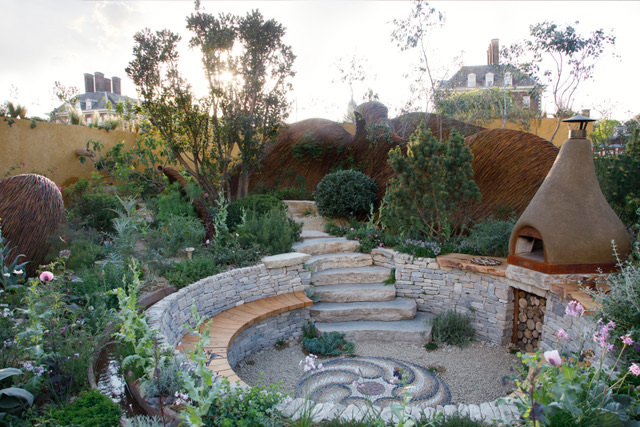
The most common motif seen in nearly all the gardens was a focus on sustainable planting. With the UK experiencing wetter winters and warmer summers with long, dry spells, designers are clearly focusing on how to futureproof gardens so they withstand changing climates.
'Adaptable gardens are crucial in our response to climate change,' notes Tony. 'These gardens are designed to withstand extreme weather conditions and adapt to changing environmental factors. When creating an adaptable garden, focus on selecting native plants that are resilient and require less water and maintenance.'
At Chelsea, John Warland and Emma O'Connell worked together to design 'The Freedom From Torture Garden' as a place of sanctuary to evoke happier memories of warmer homelands far away for survivors of torture. 'All the plants featured are survivors of the plant world - drought tolerant and adapted to low fertility soils, particularly pertinent as we face longer periods of heat and drought here in the UK,' says Emma.
They worked alongside Beth Chatto, who specializes in resilient planting, to find the perfect flora to flourish in arid environments. 'Key plants include tough evergreens such as Cistus and Atriplex halimus, as well as many self-seeders including Papaver somniferum (Breadseed Poppy), and Nigella (Love-in the mist), all of which flourish in dry gardens,' says Emma.
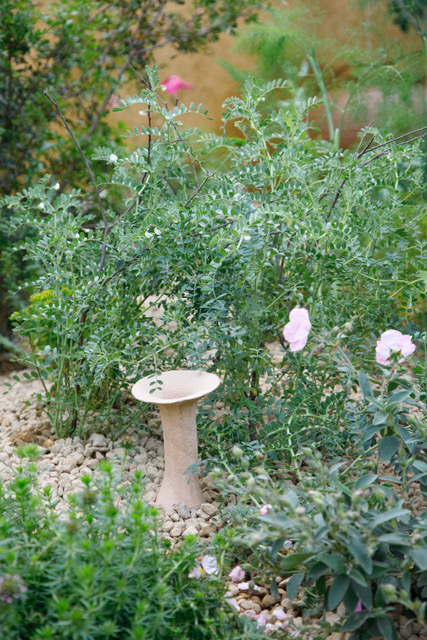
The garden also features olla pots (pictured above), an ancient irrigation technique that allows water to gradually drain through porous clay for a self-watering system. 'These clay pots are buried below ground and filled with water,' Emma explains. 'The water then gradually seeps out of the pot watering plants nearby over a period of time, perfect for preserving water as an increasingly valuable resource and watering in a low maintenance easy way.'
Chelsea Flower Show always offers a wealth of innovative new garden trends, and this year's ideas combine form and function for sustainable, multipurpose planting that prepares our outdoor spaces for the future. If you want a beautiful modern garden that serves you in more ways than one, incorporate some of these ideas into your space next growing season.







